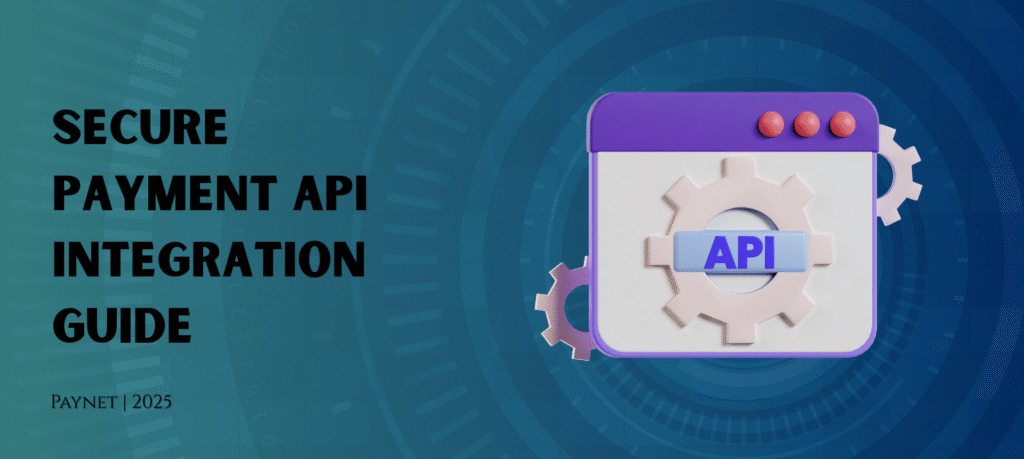User Behavior in Digital Wallet Usage: Insights That Are Shaping the Future of Digital Payments – [Cloned #1447]
Home UPI Growth and Adoption Insights: How India’s Favorite Payment System Is Shaping the Future of Finance Explore UPI growth...

Developer-focused guide to secure API integration for payment gateways. Learn encryption, OAuth, PCI compliance, and anti-fraud techniques.
Modern payment ecosystems rely heavily on APIs to connect:
Merchant websites/apps
Payment processors
Banking networks
Fraud detection systems
With 70% of payment breaches originating from API vulnerabilities, developers must implement robust security measures. This guide covers essential practices for building PCI-compliant, fraud-resistant payment integrations.
A. Zero Trust Architecture
Verify every request (even internal ones)
Assume network compromise
Implement least-privilege access
B. Defense in Depth
Multiple security layers (network, app, data)
Fail-secure defaults
C. Privacy by Design
Data minimization (collect only what’s needed)
Default encryption
Critical:
Never expose API keys in frontend code
Implement IP whitelisting for sensitive endpoints
|
Method
|
Best For
|
Implementation Tips
|
|---|---|---|
|
OAuth 2.0
|
Third-party access
|
Use PKCE for public clients
|
|
JWT
|
Session management
|
Set short expiry (15-30 mins)
|
|
Mutual TLS
|
Server-to-server
|
Rotate certificates quarterly
|
|
HMAC Signing
|
Webhook security
|
Use SHA-256+ with secret rotation
|
Encryption Standards
|
Type
|
Algorithm
|
Use Case
|
|---|---|---|
|
Transport
|
TLS 1.3
|
All communications
|
|
At-rest
|
AES-256-GCM
|
Database storage
|
|
Tokenization
|
Format-preserving
|
Card/PII data
|
Never store CVV/CVC after authorization
Mask PANs in logs (first 6/last 4 digits only)
Quarterly vulnerability scans
Real-Time Checks
Python Code
def validate_payment(request):
if request.ip in blacklist: return reject()
if velocity > $5000/hour: return review()
if bin_country != shipping_country: return flag()
Advanced Methods
Device fingerprinting
Behavioral biometrics
Machine learning scoring
Rate Limiting
location /api/v1/process {
limit_req zone=payment burst=20 nodelay;
}
Input Validation
JS Code
// Never do this:
const sql = `SELECT * FROM payments WHERE id = ${input}`;
// Do this instead:
const stmt = db.prepare(“SELECT * FROM payments WHERE id = ?”);
Security Headers
Strict-Transport-Security: max-age=63072000
Content-Security-Policy: default-src ‘none’
X-Content-Type-Options: nosniff
Essential Logs:
All authentication attempts
Payment status changes
Privileged operations
Alert Thresholds:
5+ failed auth attempts/minute
Unusual settlement patterns
Geographic anomalies
|
Standard
|
Relevance
|
|---|---|
|
PCI DSS
|
Mandatory for card processing
|
|
ISO 27001
|
Security management
|
|
SOC 2
|
Cloud service providers
|
|
GDPR
|
European data protection
|
✅ Implement OAuth 2.0 with PKCE
✅ Use TLS 1.3 with modern cipher suites
✅ Tokenize sensitive data before storage
✅ Validate all inputs against strict schemas
✅ Monitor API traffic for anomalies
✅ Conduct quarterly penetration tests
Secure API integration requires multiple defensive layers – from robust authentication to real-time fraud detection. By following these practices, developers can build payment systems that are:
Resistant to common attacks
Compliant with industry standards
Trusted by merchants and consumers
Home UPI Growth and Adoption Insights: How India’s Favorite Payment System Is Shaping the Future of Finance Explore UPI growth...
Home User Behavior in Digital Wallet Usage: Insights That Are Shaping the Future of Digital Payments Explore changing user behavior...
Home New Features in UPI and Mobile Wallets 2025: Smarter, Safer & More Seamless Than Ever Explore the latest features...